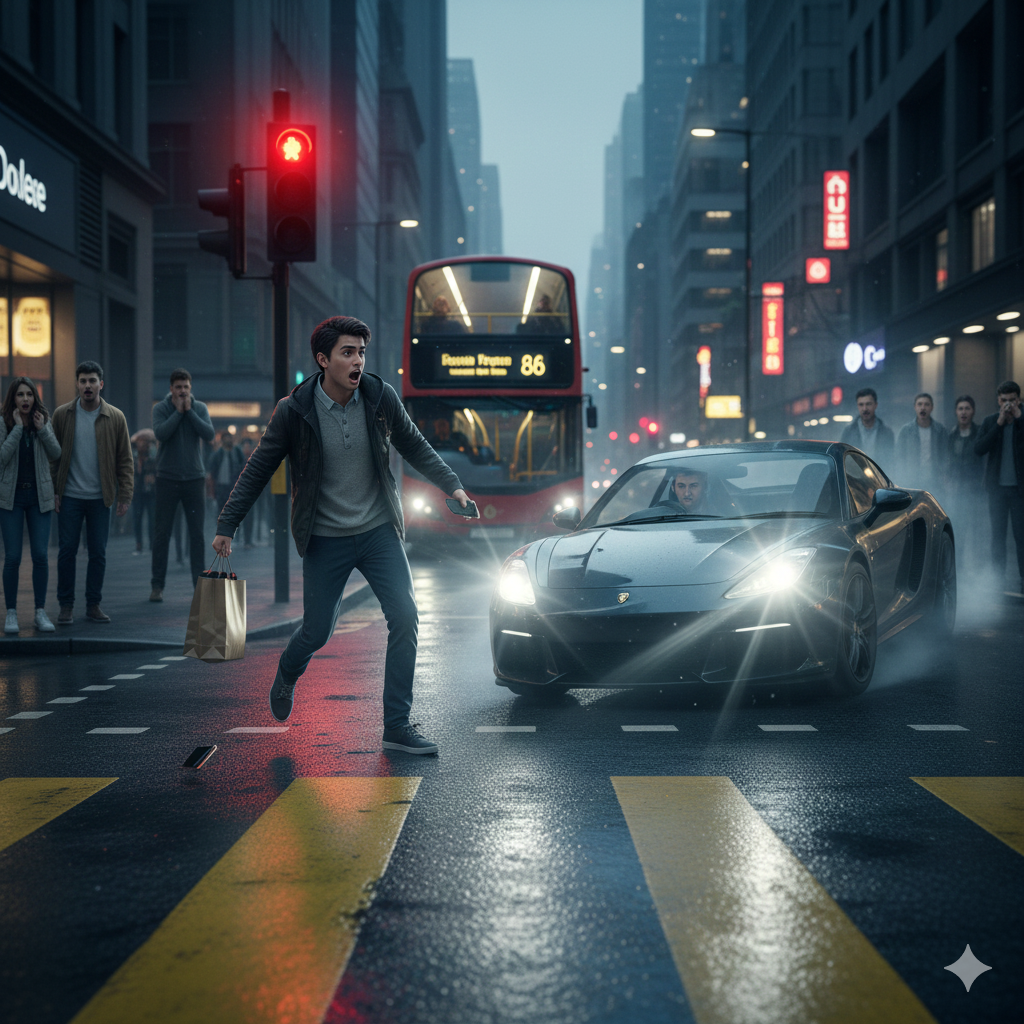By Richard Brown
Across the UK, pedestrians are raising the alarm about increasingly hostile and dangerous behaviour from drivers at junctions and crossing points. Reports of motorists failing to give way, revving engines at walkers, and using mobile phones while driving have become disturbingly common — prompting renewed calls for enforcement and education.
Pedestrians have the legal right of way when crossing a junction
Under the UK Highway Code, the law is unambiguous:
- Rule 170: Drivers must give way to pedestrians who are crossing or waiting to cross a junction.
- Rule 206: Drivers must be particularly careful at junctions and must slow down and be ready to stop for pedestrians.
- Rule 207: Drivers must not intimidate pedestrians by revving engines, edging forward, or forcing them to rush.
In other words, if a pedestrian steps off the pavement (footpath) and begins crossing a side road or junction they have the legal right to complete their crossing safely. A driver has no legal authority to pressure, rush, or endanger them.
Yet many pedestrians report drivers aggressively accelerating, honking, or trying to cut in front of them — actions that are not only dangerous but illegal.
Mobile phone use: a growing threat on the roads
Despite nationwide campaigns, many drivers continue to handle mobile phones behind the wheel. The law is extremely clear:
Using a hand-held mobile while driving is illegal.
- Penalty: £200 fine and 6 points on the licence (DVLA guidance, 2022 changes).
- Drivers can be prosecuted for dangerous or careless driving if phone use contributes to a near-miss or collision.
Studies consistently show reaction times while using a phone are slower than a drink-driver’s — yet more motorists are seen texting at junctions, scrolling social media at red lights, or checking notifications while turning.
At crossings, this behaviour becomes lethal: a single moment of inattention can kill a pedestrian who has every legal right to be in the road.
Why are drivers becoming moodier, ruder, and less considerate?
Experts and behavioural researchers point to several factors:
1. Post-pandemic stress and social fatigue
Heightened stress levels, financial pressures, and social tension have made many people more irritable and less patient.
2. Over-reliance on cars and “ownership entitlement”
Psychologists say some motorists behave as though the road “belongs to them,” leading to hostility toward pedestrians or cyclists they view as “obstacles.”
3. Distraction culture
Smartphones, in-car screens, and navigation apps create constant distraction, reducing empathy and awareness of vulnerable road users.
4. Reduced police traffic enforcement
With fewer patrols on the roads, many drivers feel they can break rules — especially around phone use and speeding — without consequences.
5. Social modelling
When people see aggressive or rule-breaking driving go unchallenged, they imitate it. This creates an escalating cycle of incivility and danger.
A dangerous pattern at junctions
One of the most serious concerns raised by road-safety charities is the increasing number of incidents where drivers attempt to force pedestrians to hurry across a junction they legally own.
Examples include:
- Revving engines while a pedestrian is mid-crossing
- Approaching at unsafe speed despite seeing a person in the road
- Cutting behind or in front of a walker already crossing
- Honking at parents, elderly walkers, or mobility-impaired pedestrians
These behaviours breach the Highway Code and can constitute:
- Careless driving
- Dangerous driving
- Driving without due care and attention
- Driving without reasonable consideration for other persons
All of which are chargeable offences under UK law.
A call for urgent action
Advocates are urging councils, police forces, and the DVLA to:
- Increase enforcement around junctions and pedestrian priority
- Launch stronger campaigns on mobile phone dangers
- Enhance driver education, especially around Rule 170
- Install more traffic-calming and visibility improvements
Until then, pedestrians remain vulnerable — often forced to navigate a landscape where too many drivers forget that roads are shared spaces, not personal property.
REFERENCES (DVLA / HIGHWAY CODE / UK LAW)
- Highway Code Rule 170: Drivers must give way to pedestrians crossing a junction.
- Highway Code Rule 206 & 207: Drivers must take extra care at junctions and must not intimidate pedestrians.
- Highway Code Rule 66, 72: Protecting vulnerable road users (pedestrians, cyclists).
- Mobile Phone Law (2022 Revision) — DVLA & UK Government Legislation:
Using a hand-held mobile device while driving is illegal and carries a £200 fine + 6 penalty points. - Road Traffic Act 1988 – offences of careless, inconsiderate, or dangerous driving.






